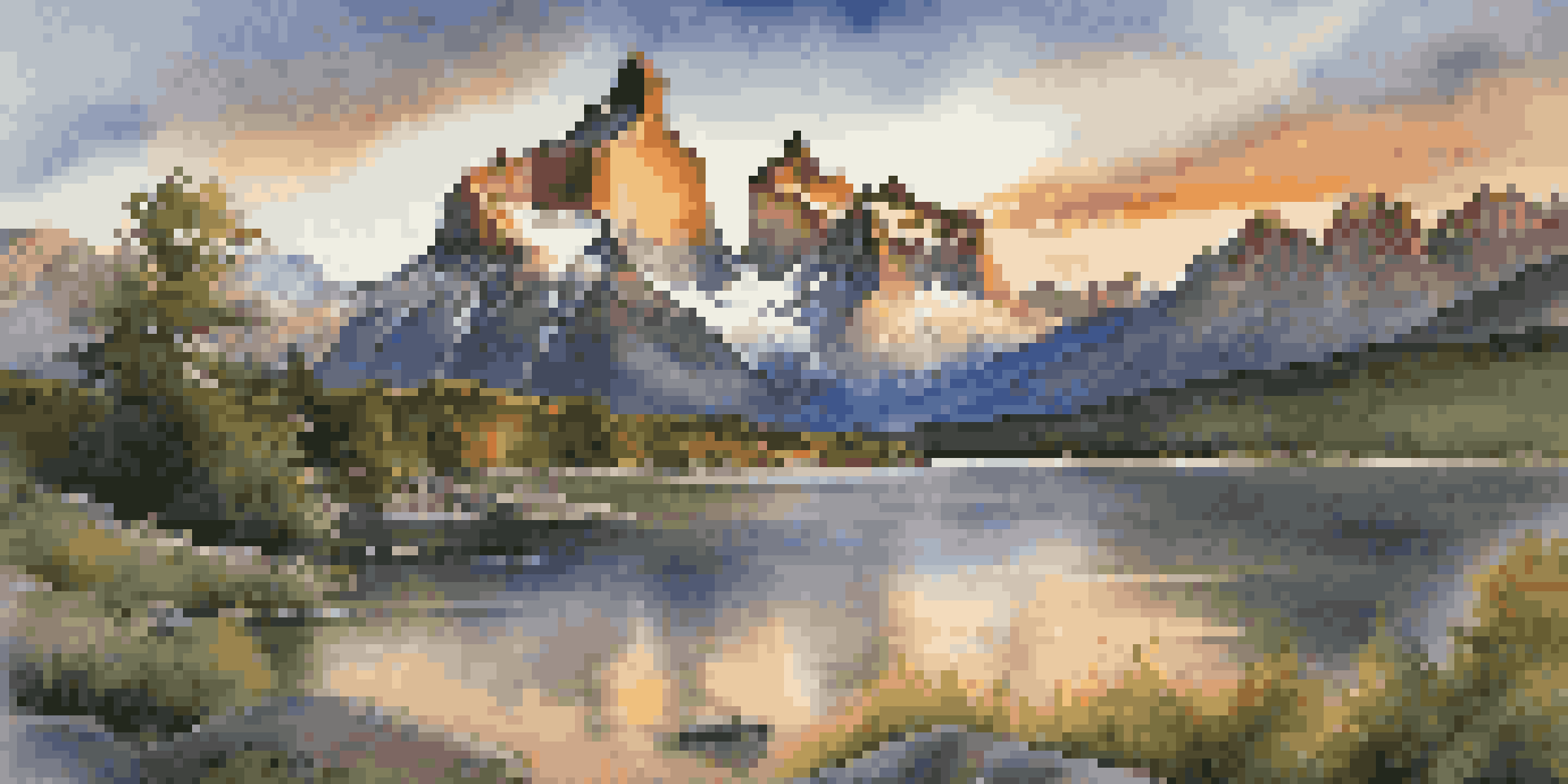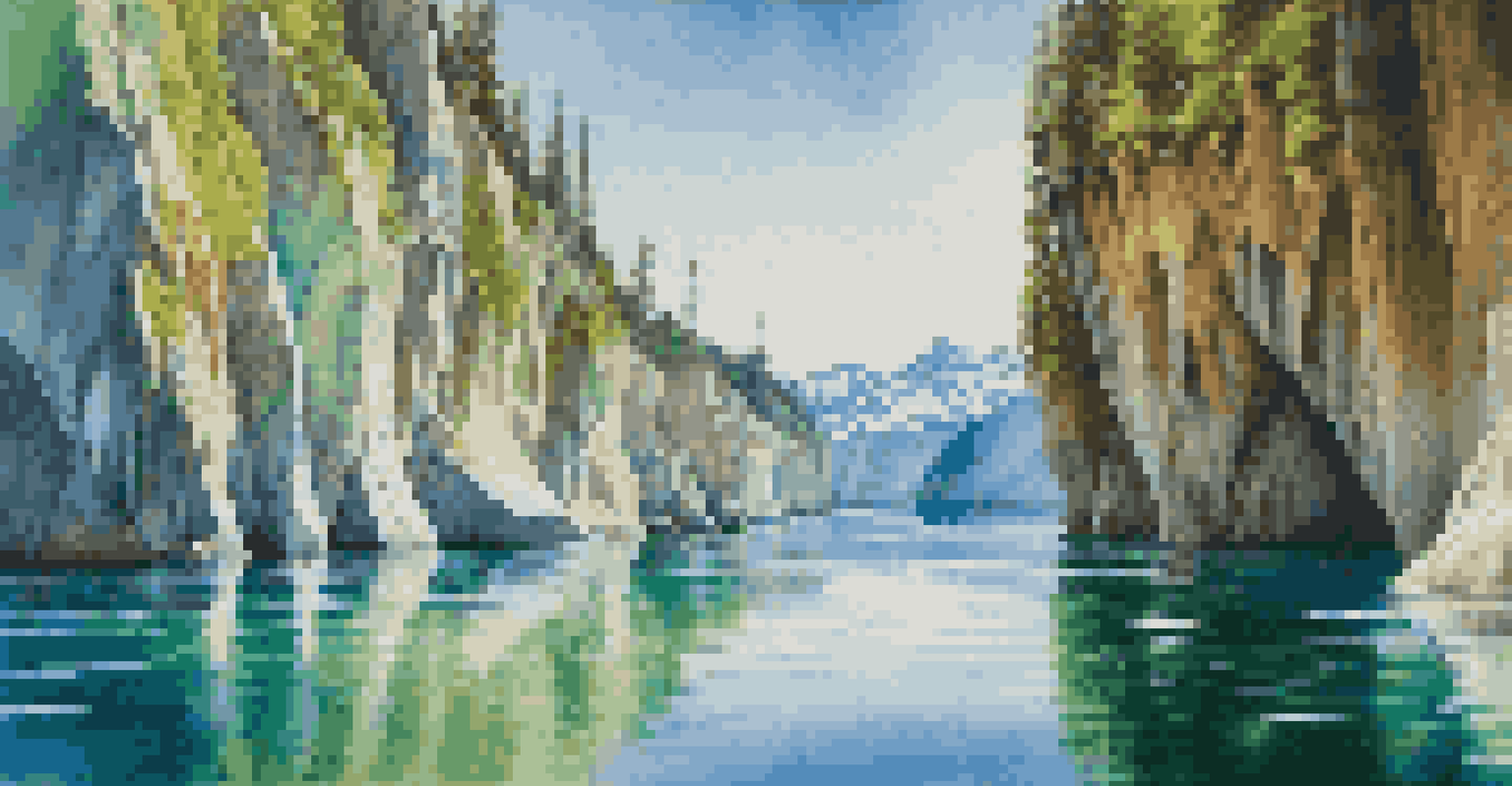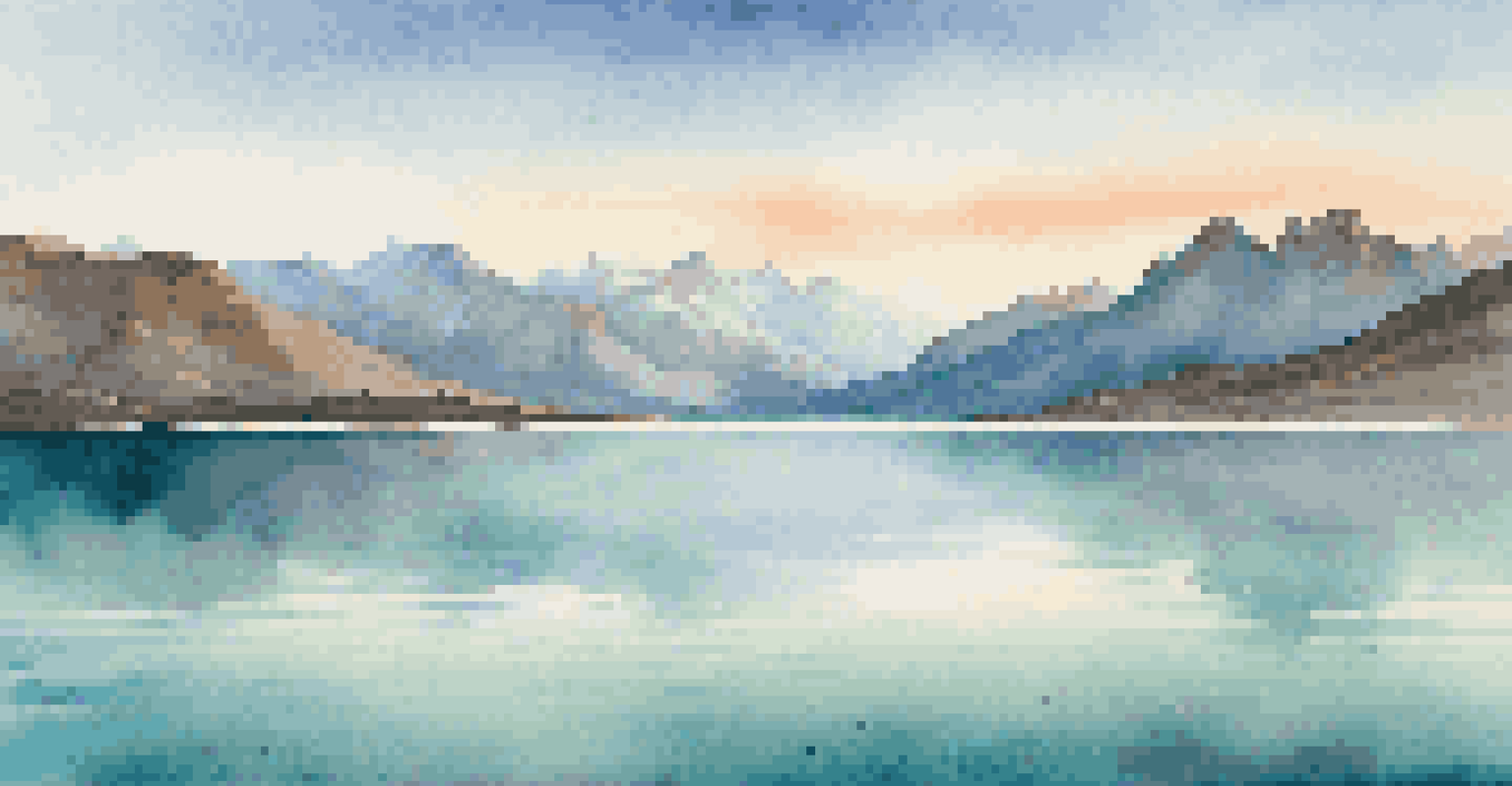Exploring the Best Photography Locations in Patagonia

The Majestic Towers of Paine: A Photographer's Dream
The Towers of Paine, with their striking granite spires, stand as iconic symbols of Patagonia. These majestic formations create a dramatic backdrop for any photograph, especially during sunrise or sunset when the light casts a golden glow on the peaks.
In every walk with nature one receives far more than he seeks.
Hiking to the base of the Towers is a popular trek, offering various viewpoints along the way. Each perspective reveals different angles of these towering giants, making it a playground for photographers eager to capture the perfect shot.
Don’t forget your tripod! The changing light and dynamic weather can lead to breathtaking long-exposure shots, showcasing the beauty of the landscape and the surrounding glacial lakes.
Exploring the Breathtaking Glaciers of Perito Moreno
Perito Moreno Glacier is one of Patagonia's crown jewels, famous for its stunning blue hues and dynamic ice movements. As you stand before this massive glacier, you can hear the thunderous sounds of ice calving into the turquoise waters below.

The various lookout points around the glacier provide ample opportunity for capturing its grandeur. Whether you're up close on a boat tour or from a distance on the trails, each angle offers a unique perspective of this natural wonder.
Photogenic Landscapes of Patagonia
The stunning natural formations and diverse scenery, including the iconic Towers of Paine and the vibrant Lake Pehoé, offer endless opportunities for breathtaking photography.
Timing your visit is crucial; late afternoon often provides the best lighting for photographs. The interplay of light and ice creates stunning reflections and contrasts that are simply irresistible to capture.
Wildlife Photography in Torres del Paine National Park
Torres del Paine National Park is not only known for its landscapes but also for its rich biodiversity. From guanacos to condors, the park is a wildlife photographer's paradise, offering endless opportunities to capture animals in their natural habitats.
Nature does not hurry, yet everything is accomplished.
Early mornings are the best time to spot these creatures, as they are most active at dawn. Patience is key; waiting quietly in a concealed spot can yield breathtaking images of wildlife interacting with their environment.
Consider using a telephoto lens to get close-up shots without disturbing the animals. This way, you can document their behaviors while preserving their natural beauty.
Capturing the Unique Flora of the Region
Patagonia is home to a diverse range of flora that adds vivid colors and textures to your photography. From the vibrant flowers of the lenga and coihue forests to the striking formations of the native lenga trees, every corner offers something new to explore.
Macro photography can be particularly rewarding here. Getting up close with the delicate petals or the intricate details of leaves can result in stunning images that highlight the unique beauty of Patagonia’s plant life.
Wildlife and Flora Photography Tips
Capturing the rich biodiversity and unique plant life of Patagonia requires patience, the right equipment, and an understanding of the best times to photograph.
Make sure to explore different times of the year; spring and summer bring a burst of color, while autumn paints the landscapes in rich hues of orange and red, perfect for capturing seasonal changes.
The Alluring Beauty of Lake Pehoé
Lake Pehoé is renowned for its breathtaking views and picturesque surroundings, making it a must-visit for photography enthusiasts. The lake’s vibrant blue waters contrasted with the rugged peaks of the Andes create a stunning canvas for any photograph.
Sunrise and sunset are magical times to photograph Lake Pehoé. The soft light reflecting off the water brings out vivid colors, providing countless opportunities for striking landscape shots.
Consider taking a boat tour to explore different angles of the lake and its surroundings. The unique perspectives gained from the water can yield some of the most memorable photographs of your trip.
The Enchanting Landscapes of El Chaltén
El Chaltén, often referred to as the trekking capital of Argentina, offers a variety of stunning landscapes that are perfect for photography. The dramatic peaks of Mount Fitz Roy and Cerro Torre are often shrouded in clouds, creating an ever-changing backdrop.
Hiking the trails around El Chaltén not only provides incredible views but also allows for spontaneous photography opportunities. Each turn in the trail reveals new perspectives of the mountains, valleys, and lakes.
Best Practices for Outdoor Shooting
Being prepared for changing weather, embracing local culture, and taking your time to appreciate details can significantly enhance your photography experience in Patagonia.
Don’t forget to capture the starry skies at night! With minimal light pollution, El Chaltén is an ideal location for astrophotography, offering a chance to photograph the Milky Way above the breathtaking landscapes.
Photographing the Serene Beauty of the Marble Caves
The Marble Caves, located on Lake General Carrera, are a stunning natural formation that should not be missed. These mesmerizing caves, carved by water over thousands of years, showcase vibrant shades of blue and green, creating a surreal environment for photographers.
Exploring the caves by boat allows you to capture their beauty from various angles. The reflections in the water enhance the colors of the marble, providing a dreamlike quality to your photographs.

Visiting in the early morning or late afternoon can yield the best light conditions, making the marble formations pop against the reflective water. It's a truly magical spot that will leave you in awe.
Tips for Capturing the Essence of Patagonia
When photographing Patagonia, it's essential to be prepared for rapidly changing weather. Layers, waterproof gear, and a sturdy camera bag will help ensure you’re ready for whatever Mother Nature throws your way.
Another important tip is to embrace the local culture. Incorporating elements of the region, such as traditional gaucho life or indigenous flora, can add depth and context to your photographs.
Finally, take your time. The beauty of Patagonia is in its details, and slowing down to appreciate the scenery will not only enhance your photography but also enrich your overall experience in this incredible region.